Black-capped Chickadee
(Poecile atricapillus)
Conservation • Description • Habitat • Ecology • Distribution • Taxonomy
|
|
|||||||||||||
Description |
|
Size |
5¾″ to 6¾″ in length 8″ wingspan |
Voice |
Courtship: Slow, whistled fee-bee |
Flocking: Quick, whistled chick-a followed by a buzzy dee-dee-dee |
Similar Species |
Habitat |
Deciduous and mixed forests, woodland edges, willow thickets, cottonwood groves, urban parks, backyards with bird feeders |
Ecology |
Migration |
|
Nesting |
|
Food |
|
Distribution |
Occurrence |
Common to abundant year-round resident |
Maps |
The Minnesota Ornithologists’ Union All Seasons Species Occurrence Map |
Taxonomy |
|
Class |
Aves (birds) |
Order |
Passeriformes (perching birds) |
Family |
Paridae (tits, chickadees, and titmice) |
Genus |
Poecile (chickadees and allies) |
Subordinate Taxa |
|
Appalachian black-capped chickadee (Poecile atricapillus practicus) Columbian black-capped chickadee (Poecile atricapillus fortuitus) eastern black-capped chickadee (Poecile atricapillus atricapillus) long-tailed chickadee (Poecile atricapillus septentrionalis) Newfoundland black-capped chickadee (Poecile atricapillus bartletti) Oregon chickadee (Poecile atricapillus occidentalis) pallid black-capped chickadee (Poecile atricapillus nevadensis) Rocky Mountain black-capped chickadee (Poecile atricapillus garrinus) Yukon black-capped chickadee (Poecile atricapillus turneri) |
|
Synonyms |
|
Parus atricapillus |
|
Visitor Photos |
||
Share your photo of this bird. |
||
This button not working for you? |
||
Gregory Gilman |
||
It's been a while but I haven't forgotten how impressive your website is. Smartly and intuitively formatted, unequaled in educational content. Here's one of my favorite year-round funsters. They fly in for one discriminating seed selection and fly off to work on it. And they proclaim their name with one of their signature calls: Chickadee-dee-dee. |
||
Ramona Abrego |
||
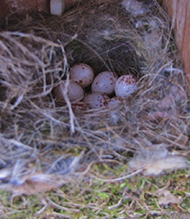 |
 |
|
 |
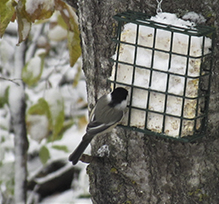 |
|
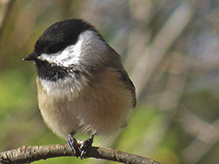 |
||
Dan W. Andree |
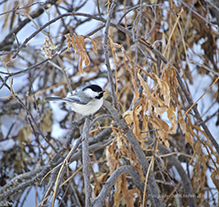 |
Kim Harcey |
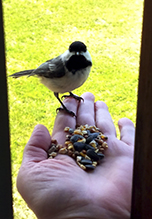 |
Tom Baker |
||
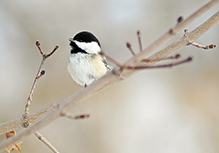 |
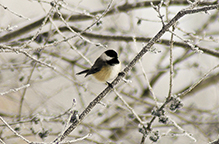 |
|
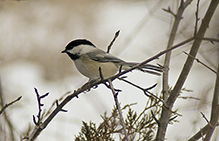 |
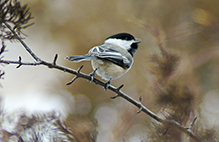 |
|
Bill Reynolds |
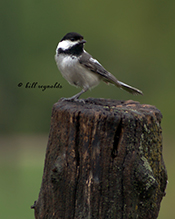 |
MinnesotaSeasons.com Photos |
||
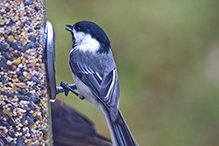 |
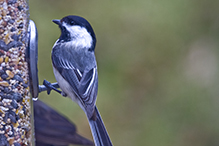 |
|
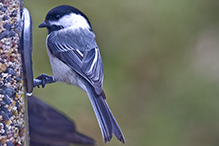 |

Slideshows |
Black-capped Chickadee |
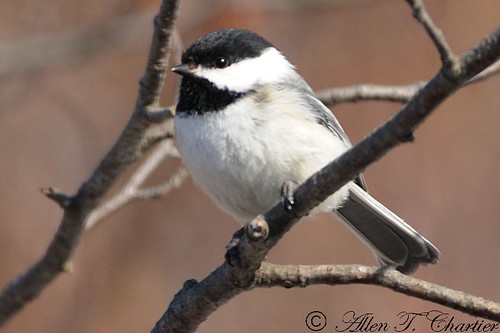
|
Black-capped Chickadee |
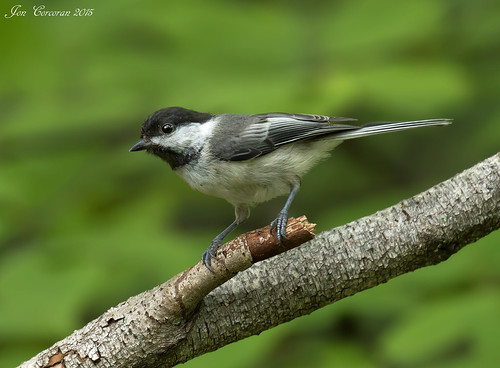
|
Black-capped Chickadee |
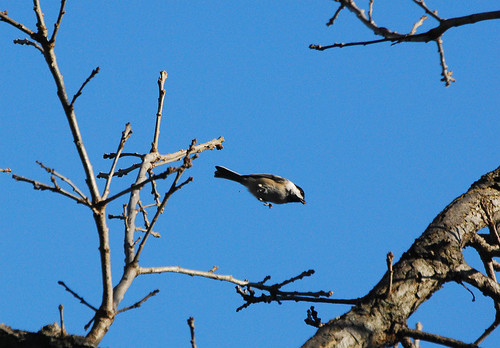
|
About
Poecile atricapillus |
Chickadees |
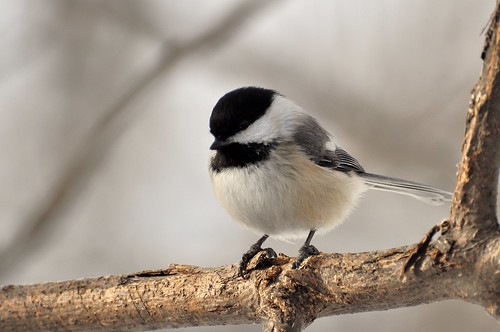
|

Visitor Videos |
||
Share your video of this bird. |
||
This button not working for you? |
||
|
Other Videos |
||
Black-capped Chickadee - March 17, 2013 |
About
Published on Mar 17, 2013 Black-capped Chickadee (Poecile atricapillus) perched on Flowering Dogwood (Cornus florida) branch, Gagnon Wildlife Habitat, Pottersville, Somerset, Massachusetts, Sunday midday, March 17, 2013, 12:20 PM - Canon PowerShot SX260 HS MVI_28030; 23 sec. |
Panasonic DMC-FZ200 - Mésange à tête noire - Chickadee (Poecile atricapillus) |
About
Published on Nov 11, 2012 Image; Réjean Biron Mésange à tête noire, ( Chickadee ) ,Boisé-des-Douze, Saint-Hyacinthe, Québec La Mésange à tête noire (Poecile atricapillus) est une espèce de passereau de la famille des paridés. C'est la plus commune des mésanges d'Amérique. The Black-capped Chickadee (Poecile atricapillus) is a small, North American songbird. |
Black-Capped Chickadee - HD Mini-Documentary |
About
Uploaded on Mar 4, 2009 http://quickdirt.com is my new mountain biking website. Check it out for more great adventures! Transcript: "This cute, little bird is the black-capped chickadee. It is found in Canada, Alaska and the northern United States and is the state bird of Maine and Massachusetts. It is generally a permanent resident of this cooler climate and has adapted well. On cold winter nights, these birds reduce their body temperatures by 10 to 12 degrees Celsius to conserve energy. In the summer, they feed on insects, but in the winter they ADAPT their diet to seeds and berries. The chickadee is named after its familiar call which is a complex song used to communicate threats from predators and to coordinate movement amongst the group. It is closely related to the Carolina chickadee its southern cousin - and is virtually indistinguishable. The only way to tell them apart is to listen to the difference in their songs. If you want to attract chickadees to your bird feeder black oil sunflower seed should do the trick." |
Black-Capped Chickadee Calls and Sounds - Fee Bee Call, Chicka Dee Dee Dee Call and a couple others |
About
Published on Oct 25, 2013 Note Couldn't upload in HD, video kept failing An amiable sight to behold at winter backyard feeders, chickadees are a delight to watch as they fly with their happy, bouncy flight back and forth to feeders collecting seeds to eat elsewhere or to hoard away for later feeding. But most delightful of all is hearing their "dee dee dee" call, in the quiet and desolate feeling dead of winter their call stands out and begs to be heard, like a song of promise for bright sunny days to come. |

Visitor Sightings |
||
Report a sighting of this bird. |
||
This button not working for you? |
||
| Ramona Abrego | Location: Washington and Becker Counties |
 |
| Jane Sjoberg 7/15/2018 |
Location: Hubbard County Why am I not seeing or hearing Chickadees this summer? They are usually very prevalent in my yard. |
|
| Dan W. Andree 2/10/2018 |
Location: in the woods along the river in Norman Co. |
 |
| Kim Harcey 5/9/2017 |
Location: Cambridge, MN |
 |
MinnesotaSeasons.com Sightings |
||

|
Created: Last Updated: © MinnesotaSeasons.com. All rights reserved. |

